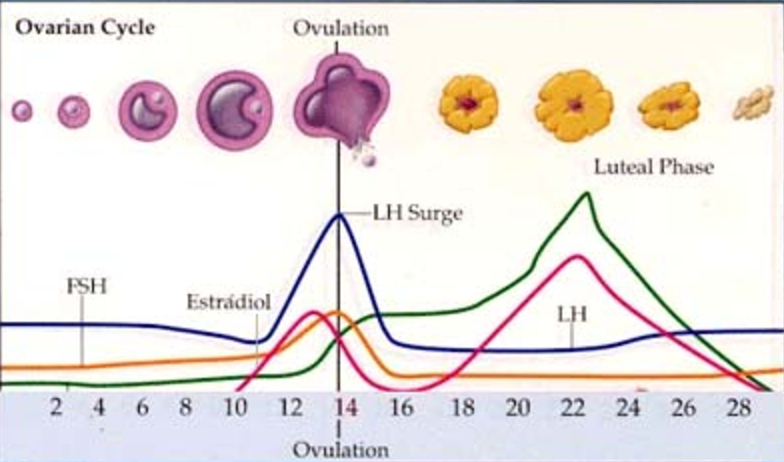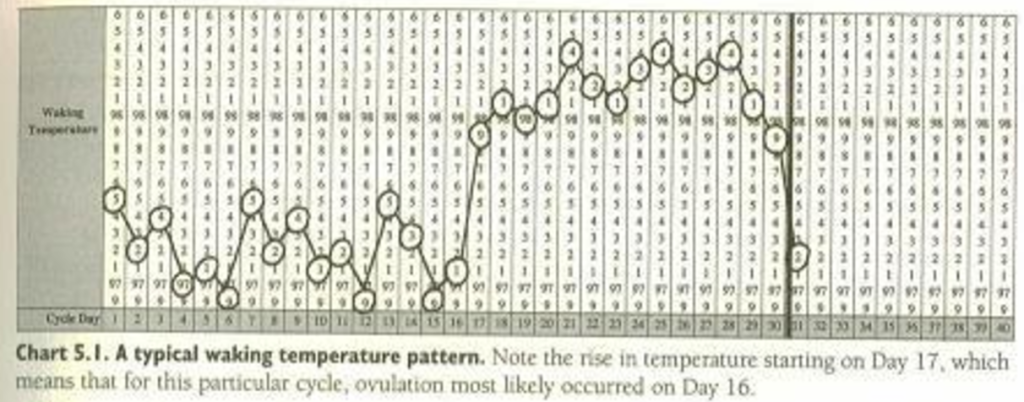This guest post was written by Austyn Smith.
Remember sex ed? All the funny phrases and shocking details that made you and all your 5th grade friends giggle nonstop at recess for the next month?! Good stuff. Important stuff. But I feel like women need ONE more sex ed class maybe around the end of high school or start of college. All about how a woman’s cycle REALLY works. What’s REALLY going on every month in terms of fertility.
When I had a hard time getting pregnant with my first baby, I came across a life-changing book, “Taking Charge of Your Fertility,” by Toni Weschelr. Having taken many science/anatomy/physiology classes in college I felt like I had a pretty good handle on how things worked, but after reading this book I realized how little we are really taught about the amazing work of art that is a woman’s body.
Weschler’s aim is to help women understand their fertility physiology for two purposes:
- To achieve pregnancy
- To practice natural birth control
Using the Fertility Awareness Method for pregnancy achievement.
Many women mistakenly believe they are infertile, when they’ve tried to conceive for 1 year without success. This can be exacerbated by irregular cycles, using the calendar to guestimate ovulation and periods, doctors prescribing clomid prematurely, doctors testing levels at the wrong time, etc. Many times infertility is not an issue, but more knowledge is needed both for patient and doctor.
Let’s start out by mapping out all the hormonal changes that happen during a normal menstrual cycle.
All of these different lines represent different hormones. I once showed this to my husband at a well-timed moment of emotion. It really helped me drive home my point that it’s just hard sometimes!
These powerful hormones are hard at work all doing different things during your cycle, preparing your body for peak fertility. The 3 fertility signs we’ll focus on here are:
- Waking Temperature
- Cervial Fluid
- Cervical Position
- Ovulation Test Strips (This one isn’t really part of the FAM but it’s a great way to back-up your results while you’re getting used to using FAM).
Tool #1—Waking Temperature
A normal pre-ovulatory temperature is 97.0-97.5 degrees. What’s cool is that after the egg has been released during ovulation, there is a big temperature surge, almost by 1 whole degree, (97.6-98.6 degrees) and it will remain high until the period comes…or pregnancy. One tricky thing about basal body temperature charts is that women can mistakenly wait until their temperature has spiked and then think, “Oh, perfect! I am about to ovulate. Time to have sex.” When in reality, the egg has already been released, and optimal conception time was a day or two earlier.
In terms of fertility tools, charting basal body temperature (BBT) can help a woman know IF she has ovulated, and WHEN she has ovulated. This can be a really helpful diagnostic tool if a woman is unsuccessful in getting pregnant. Ovulation can be delayed for many reasons—sickness, travel, stress, excessive exercise, diet changes. If you stop “trying” after the typical 14 day estimate (half of a 28 day cycle), you could miss ovulation entirely if that egg is not released for another 5 days. I once had a 54 day cycle when I was actively trying to get pregnant. Had I not been charting my temp I might have been frustrated at the slew of negative pregnancy tests, but I knew I hadn’t ovulated yet.
Another cool thing about knowing your temps is that after ovulation, the days until your period (the luteal phase) are ALWAYS the same. So once you chart a month or two and can tell your ovulation days, you know you’ll have your period in x number of days (usually 12-16). Helpful right?! This can also be a diagnostic tool, because if a luteal phase is less than 12 days after ovulation, pregnancy cannot occur. A doctor will know the exact treatment for this without you ever having to go through invasive tests.
Directions for taking waking temperature
- Take temperature first thing without even getting out of bed. Try not to move much, except to grab the thermometer.
- Take temperature orally
- Take at the same time every day, within one hour
- Make sure you’ve had three hours of consecutive sleep beforehand, or don’t count that day.
Here’s an example of a typical temperature chart.
Look at whole broad pattern, as temps will vary day to day. When there is a steady surge of temperatures .5 degrees higher than normal, you can know you’ve ovulated.
Tool #2—Cervical Fluid
The environment in a uterus is constantly changing throughout a month, while it is preparing for a potential pregnancy. Different hormone surges affect cervical mucus at various times during the cycle. A typical cycle usually follows this pattern: menstruation, nothing/dry, sticky, creamy, egg white, nothing/dry, menstruation. The most fertile type of mucus is egg white. The book has amazing pictures of different types of mucus to help familiarize yourself with all the types. If you are paying attention, you will start noticing wetness a few days before ovulation, usually on your underwear, and mucus will change. I feel naive to say that I had no idea this was normal! I thought something weird or gross was going on with me and that it didn’t happen to other women. Really it is just a signal to get moving with baby-making! This mucus is an ideal environment for sperm to thrive and move. And while we’re talking about it, most lubricant is toxic to sperm. Your best bet is to use your own fluid but if you need lubricant, use this one that is specifically meant for conception.
Directions for checking cervical mucus
- Start noticing mucus on the first day after menstruation ends. Focus on vaginal sensations throughout day.
- Check before you use bathroom (kegals before helps), about 3 times a day. Notice if it’s on your underwear throughout day. You can look on your toilet paper, on your underwear, or even check internally.
- Learn difference between semen and cervical mucus- what each type looks, feels, and stretches like. Eggwhite mucus is very stretchy, sometimes up to 8 or 9 inches!
- During the most fertile time, things should be wet often down there. Look in the toilet water during fertile time, especially after bowel movement. There will occasionally be some gooey globs of cervical mucus down in the bowl.
It might make you squeamish at first, but I have found this completely fascinating, and it has led to easier conception as a result!
Tool # 3—Cervical Position (optional)
Cervical position is also constantly changing during a menstrual cycle. At the beginning of a cycle, it starts out firm and low, then becomes closed and dry. During the fertile time, it is soft, high, open and wet. Then it returns to firm, low, closed and dry, and then finally, menstruation.
Directions for checking cervical position
Check once a day starting the day after menstruation. Wash hands with soap, and check at a consistent time every day. The most effective position for checking is squatting, but sitting on a toilet is also fine. Just be consistent.
A few other secondary fertile signs include: midcycle spotting, pain in ovaries, abdominal bloating, water retention, and breast tenderness.
Using the Fertility Awareness Method to track these 3 tools all together will give you a broad overall picture of where you stand as far as fertility is concerned. It will help you know when you are nearing your most fertile time (not always accurate by calendar!), and whether or not your body IS i fact getting fertile. You might find that your temp is changing, so you know for sure you are ovulating, but maybe you never have any egg white mucus. That can point you to the possibility that your uterine environment is hostile toward sperm. There are countless clues available from charting these variables every month. It can even help you know if you are achieving pregnancy regularly, but then miscarrying early. Knowledge is power, and the more info you can bring to your doctor the better.
FAM can be a very helpful tool in achieving pregnancy or diagnosing specifics with infertility. I’ve used it for many many years and have loved it. It’s brought me my babies, but equally important has helped me to better understand what’s happening with my body every month, physically and emotionally. And let’s just say- that’s a benefit for the entire family!



No Comments yet!